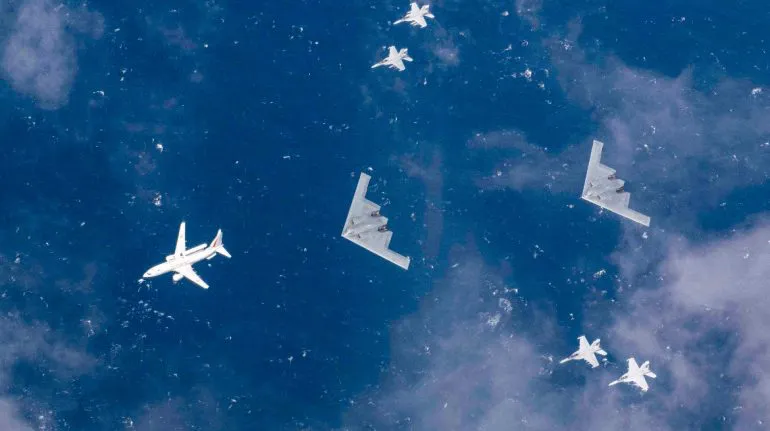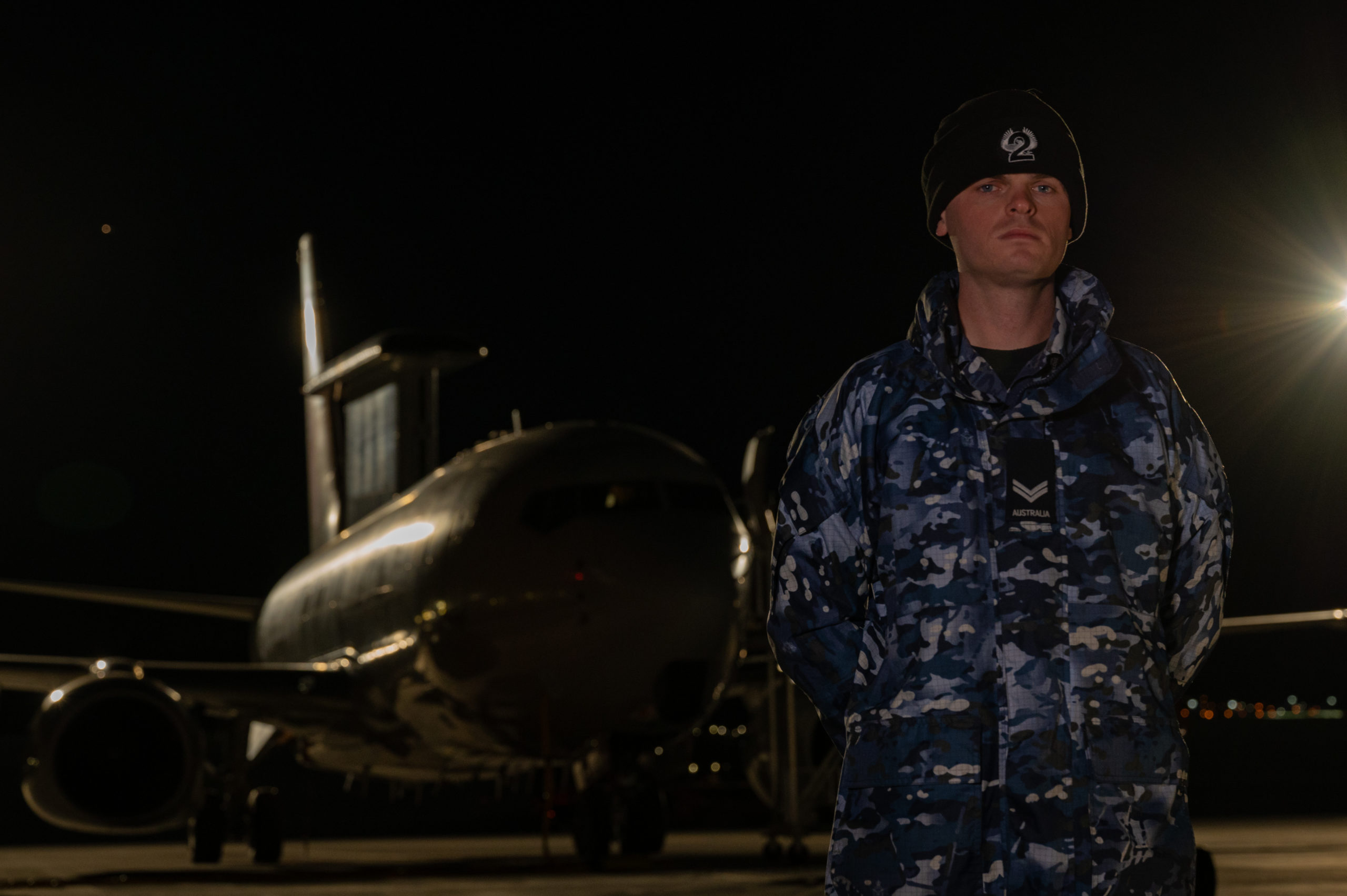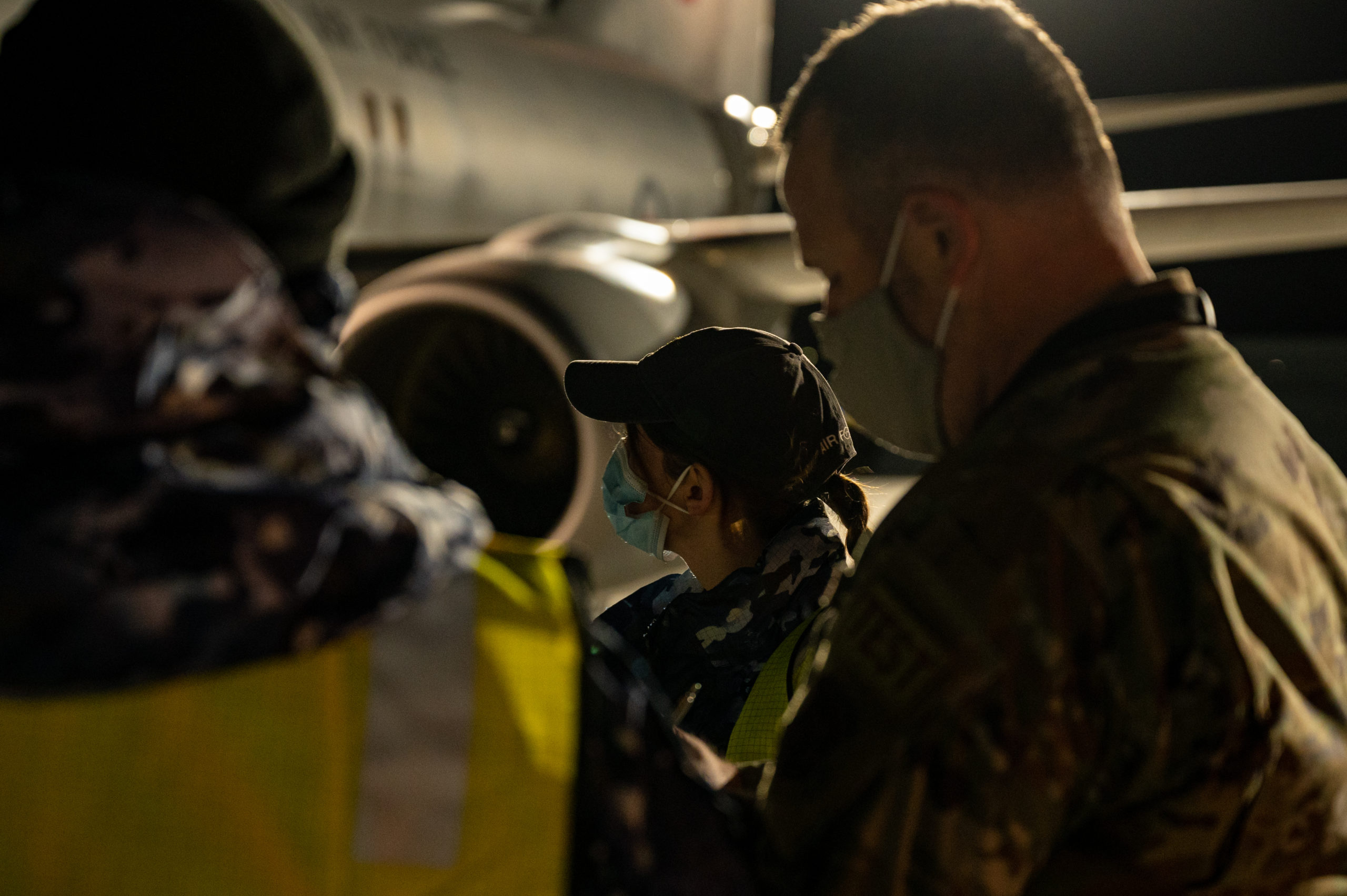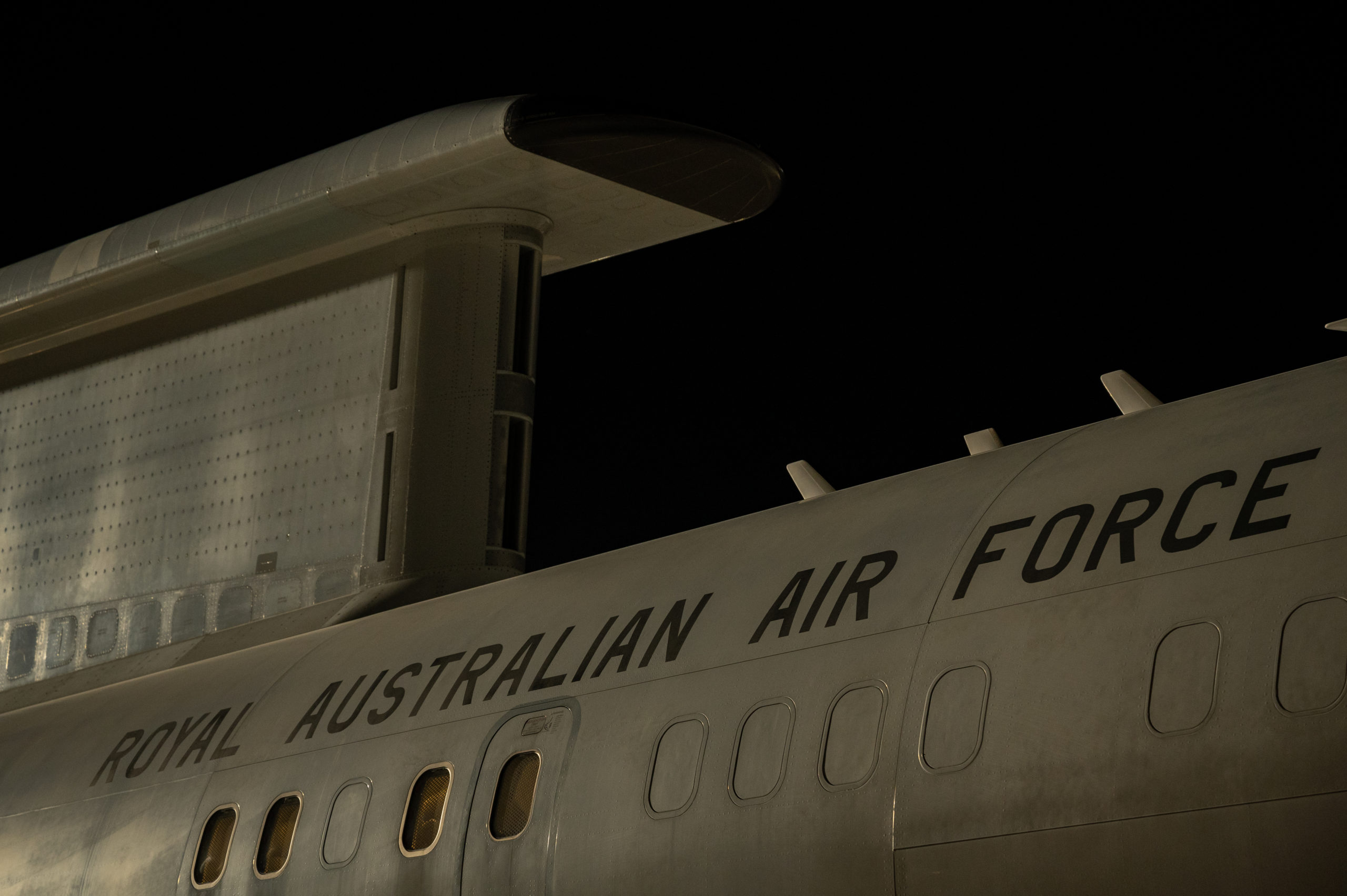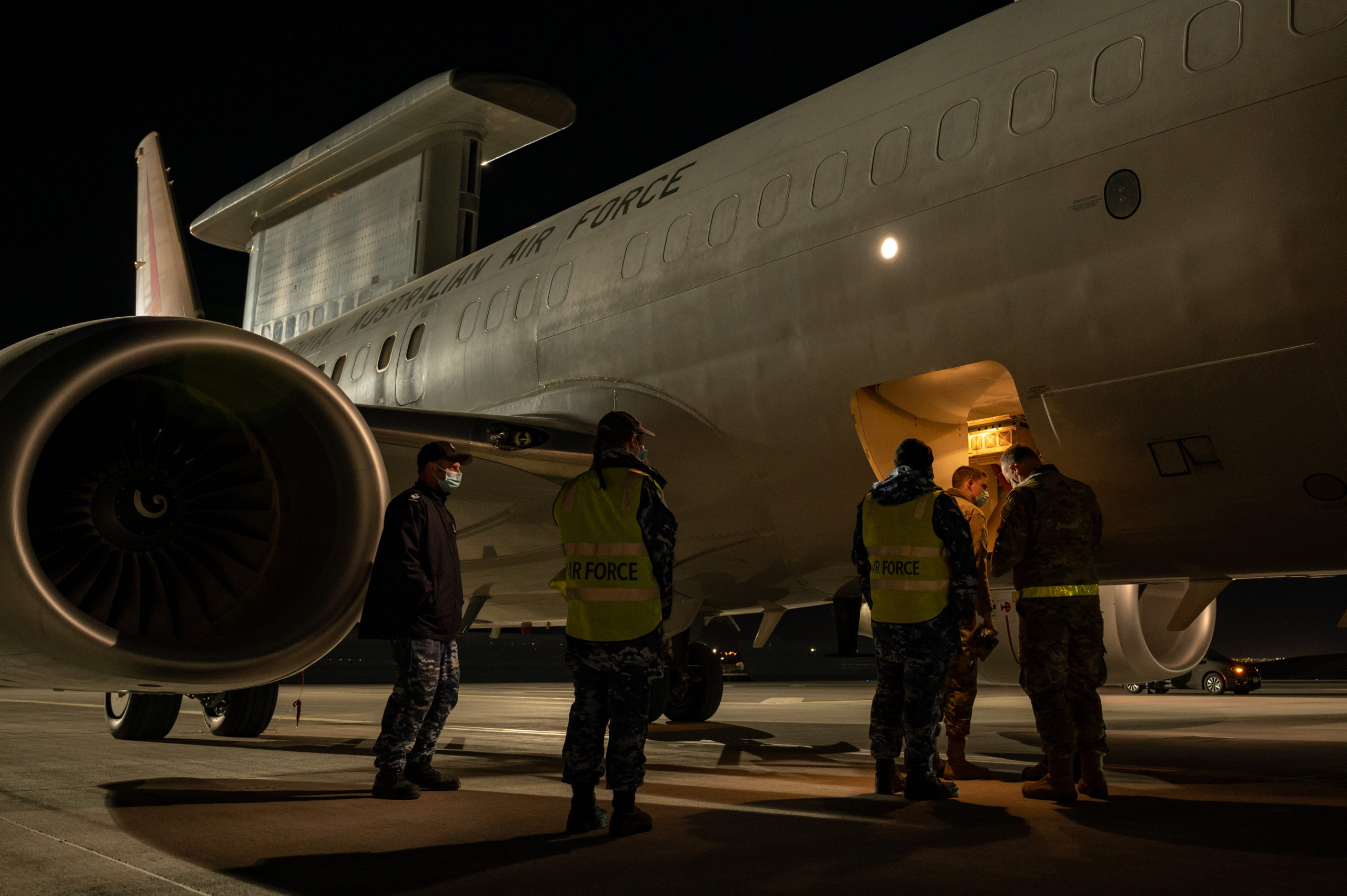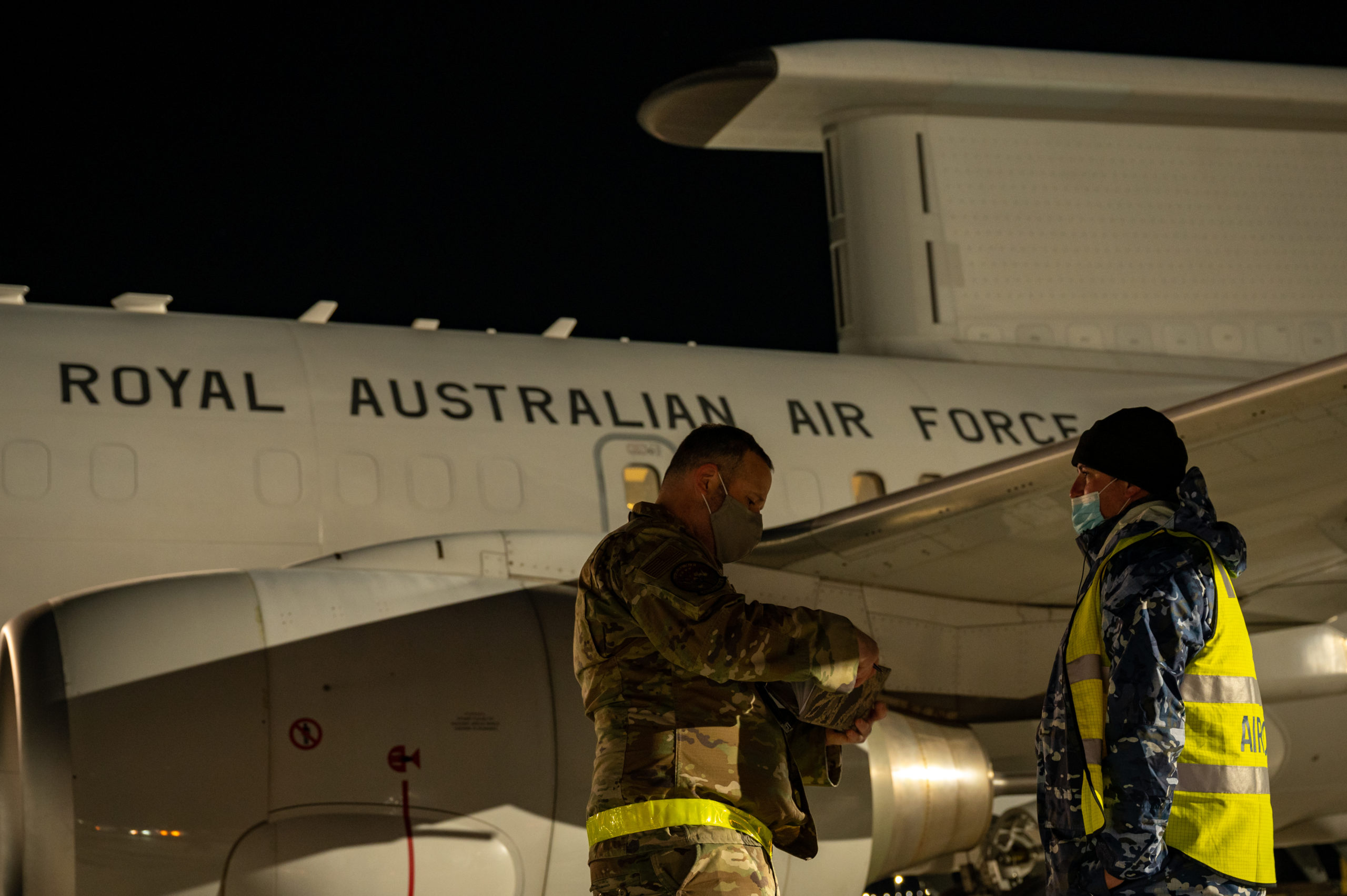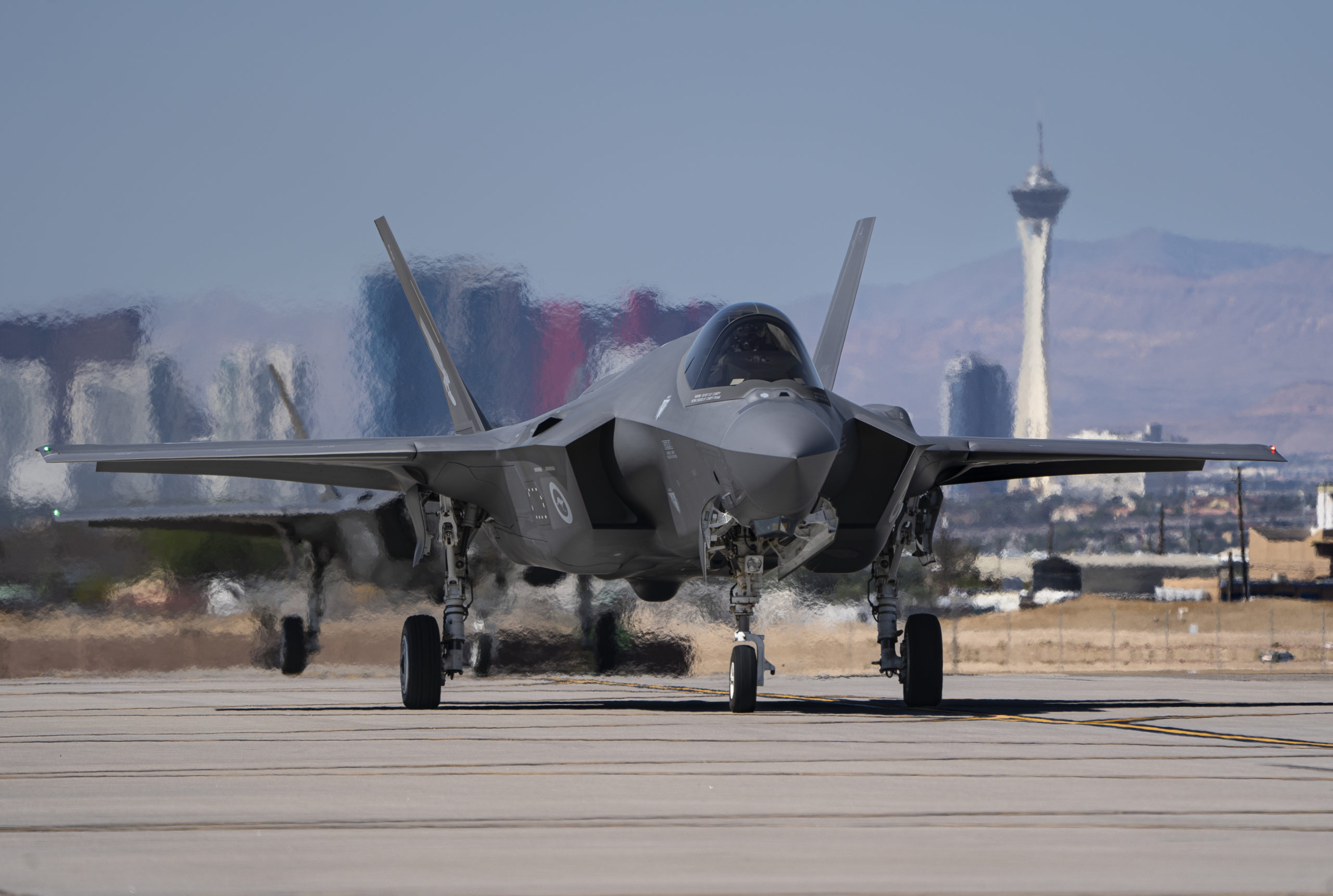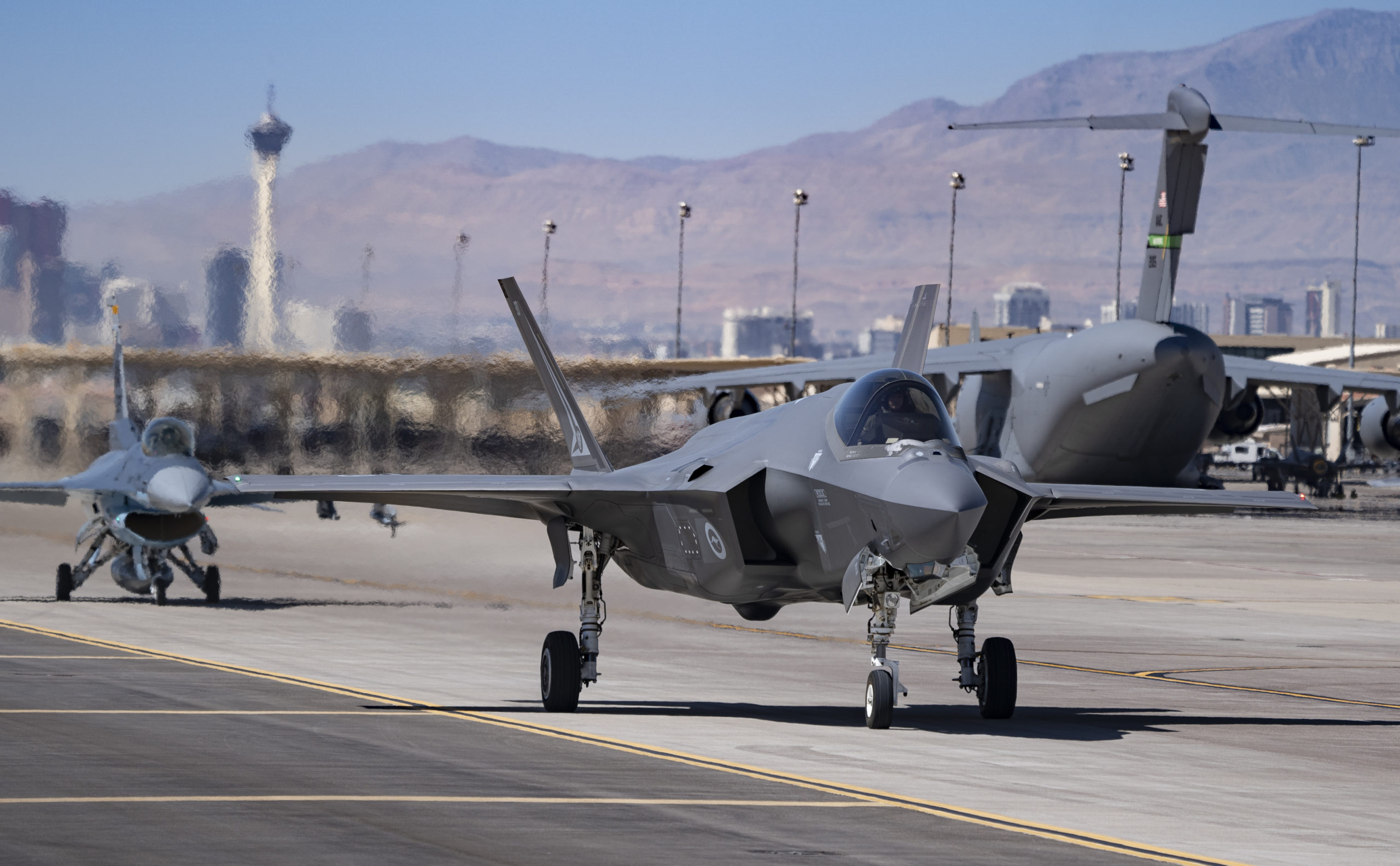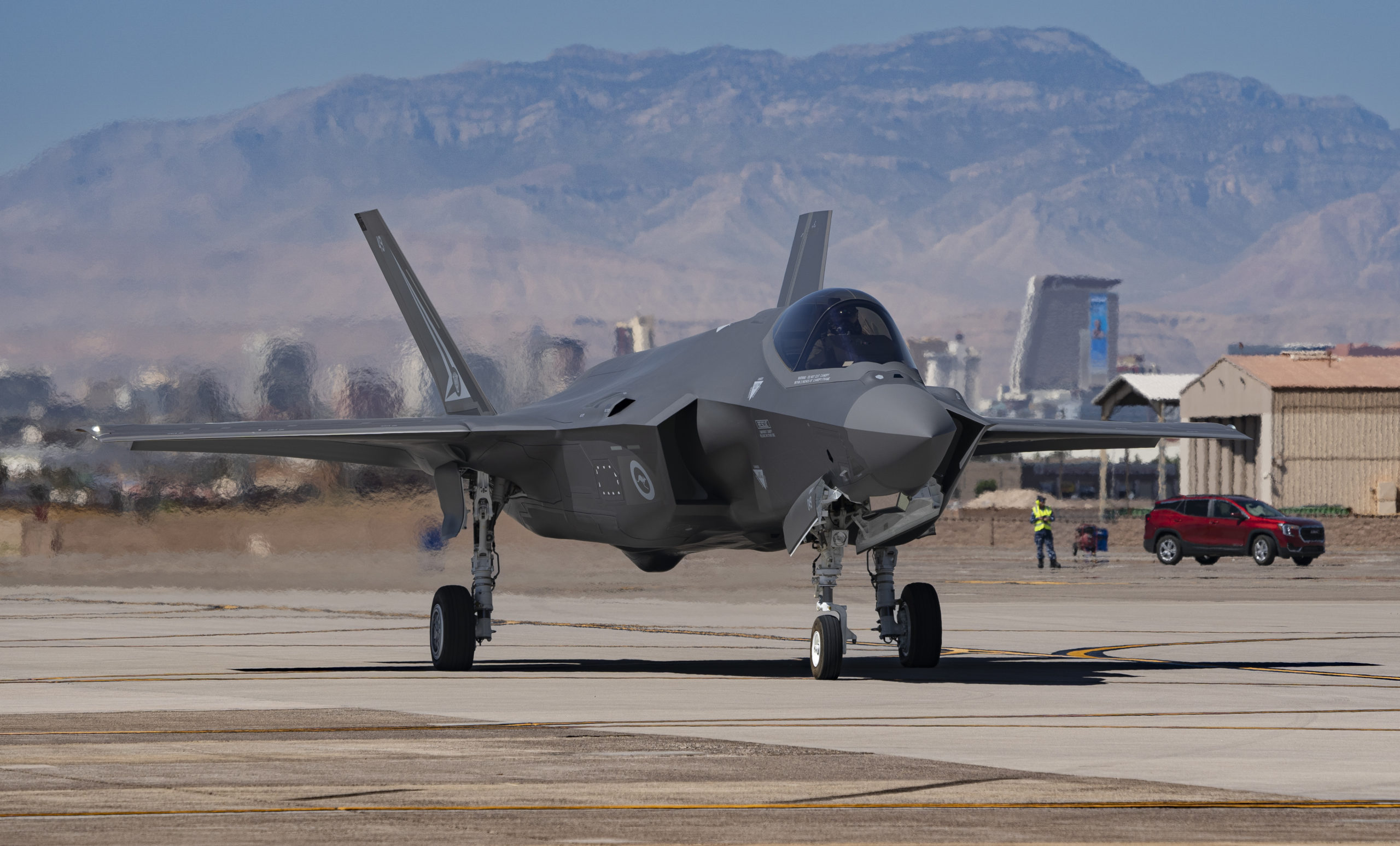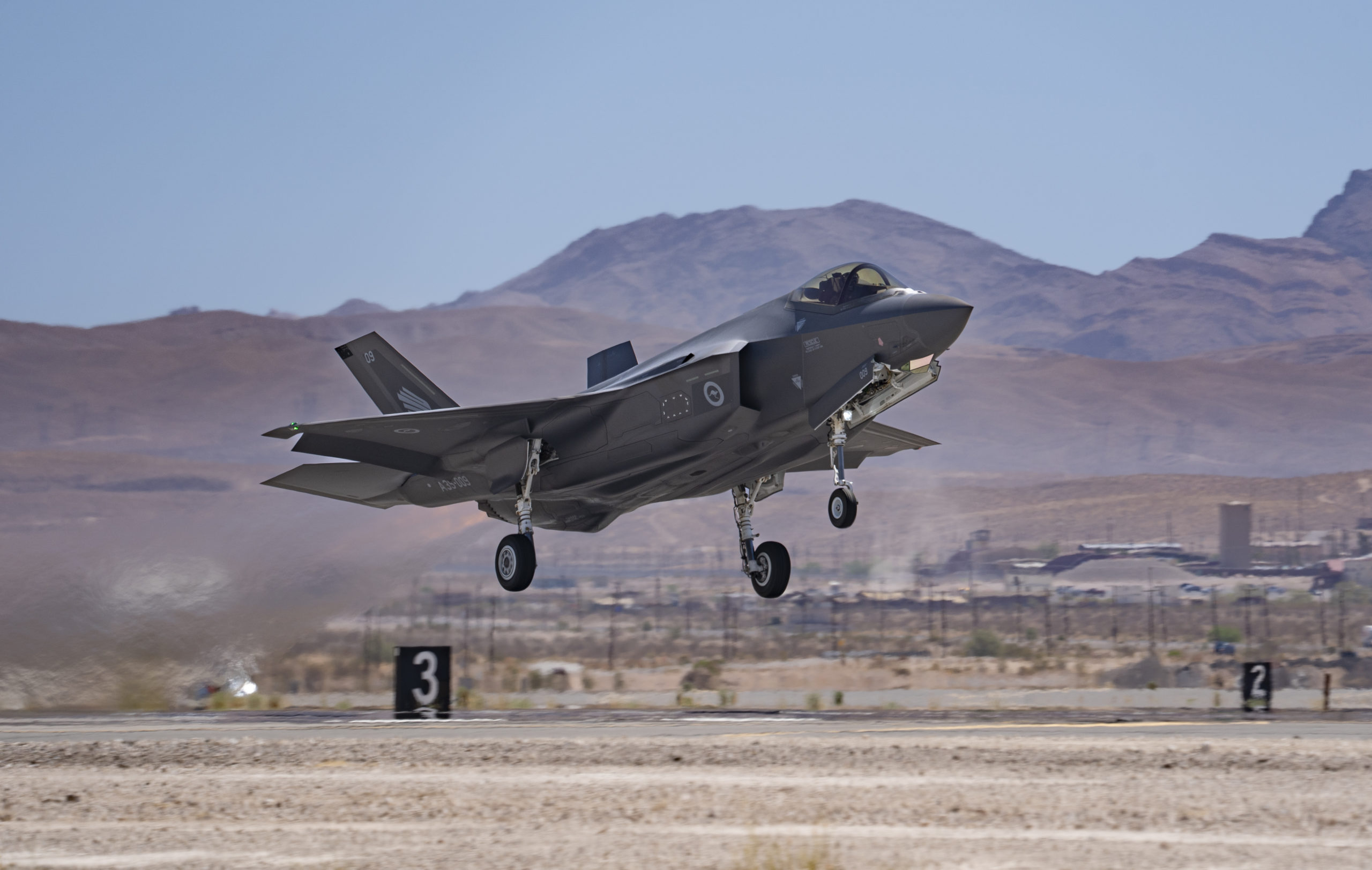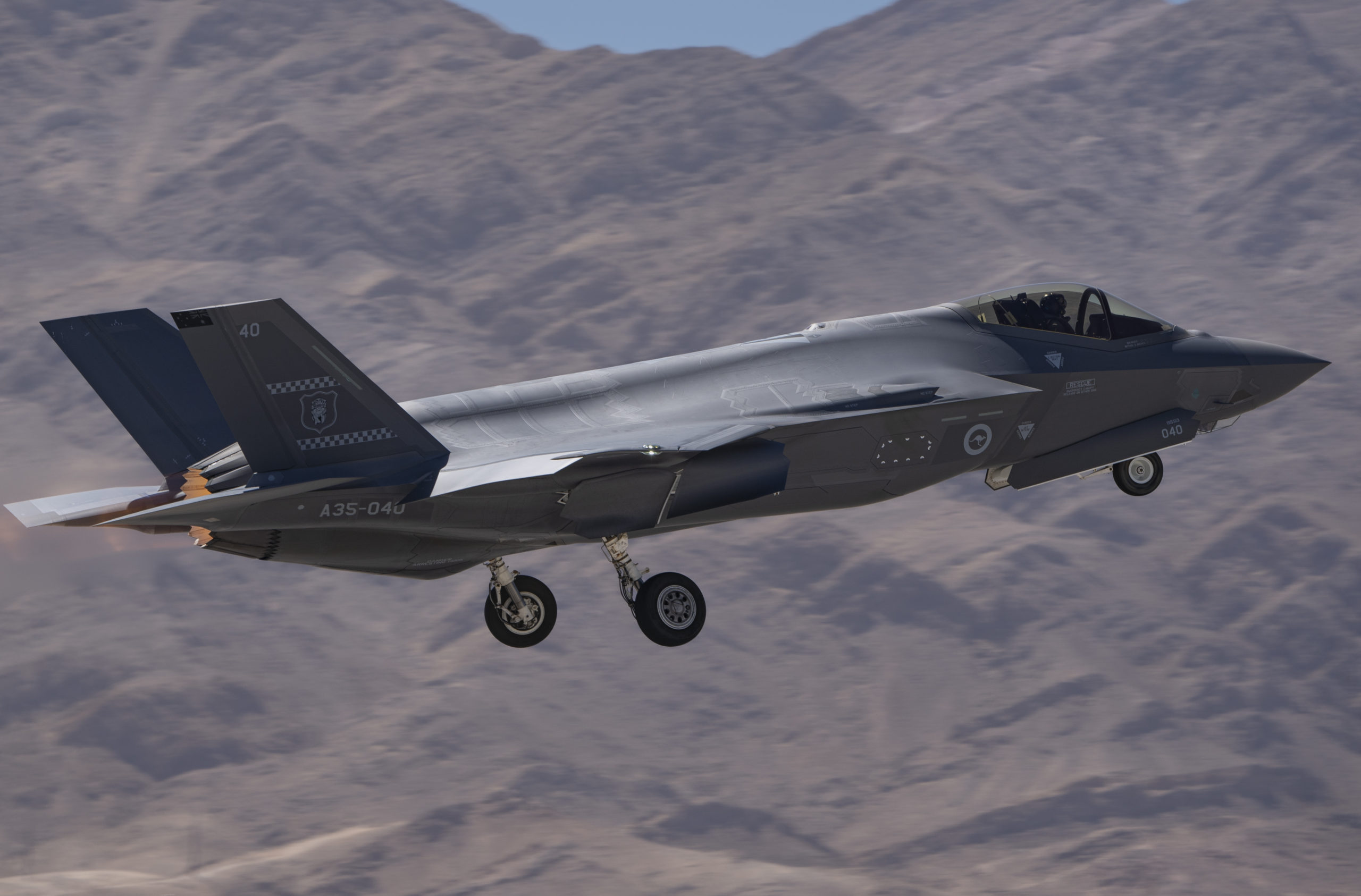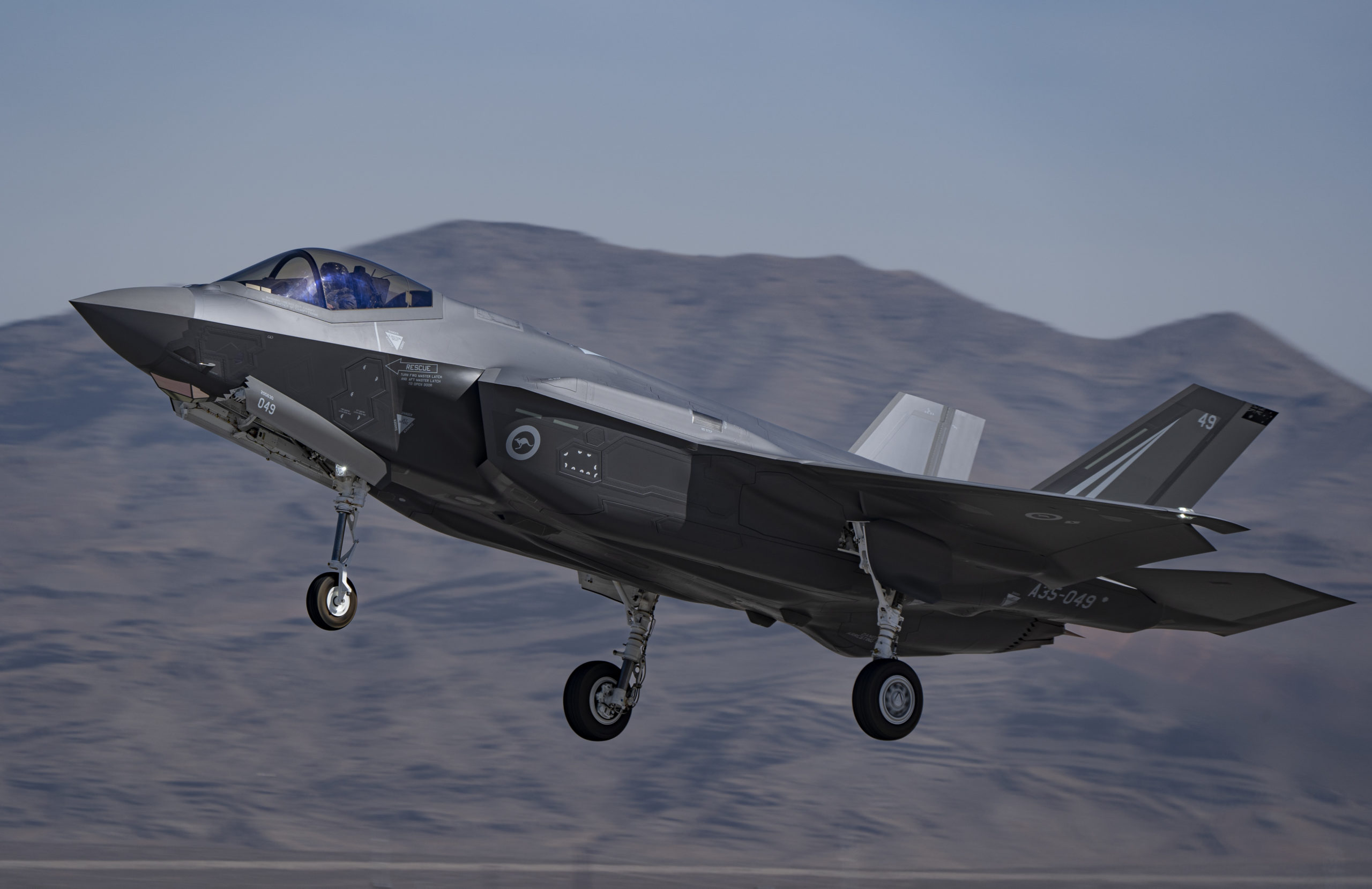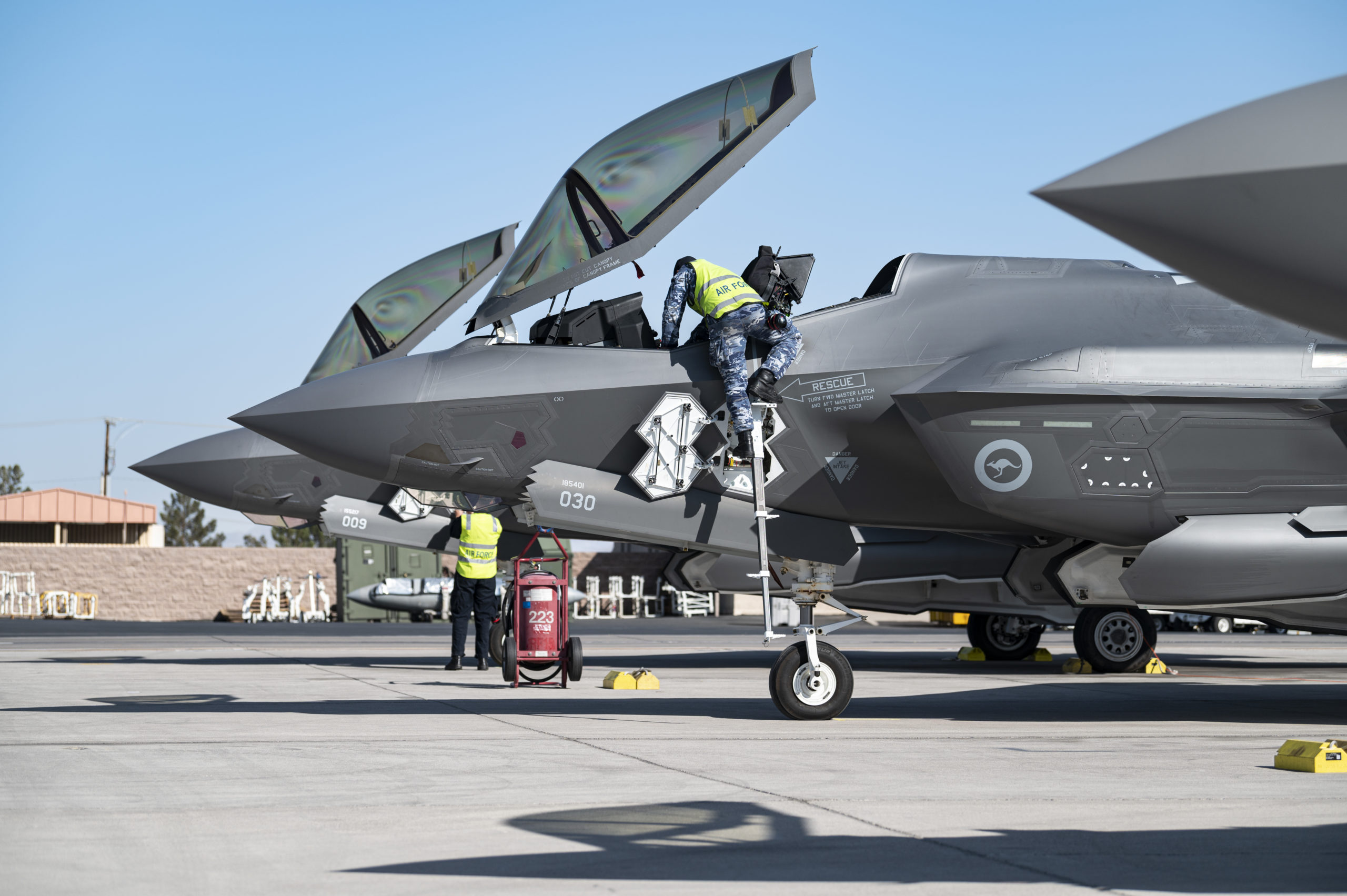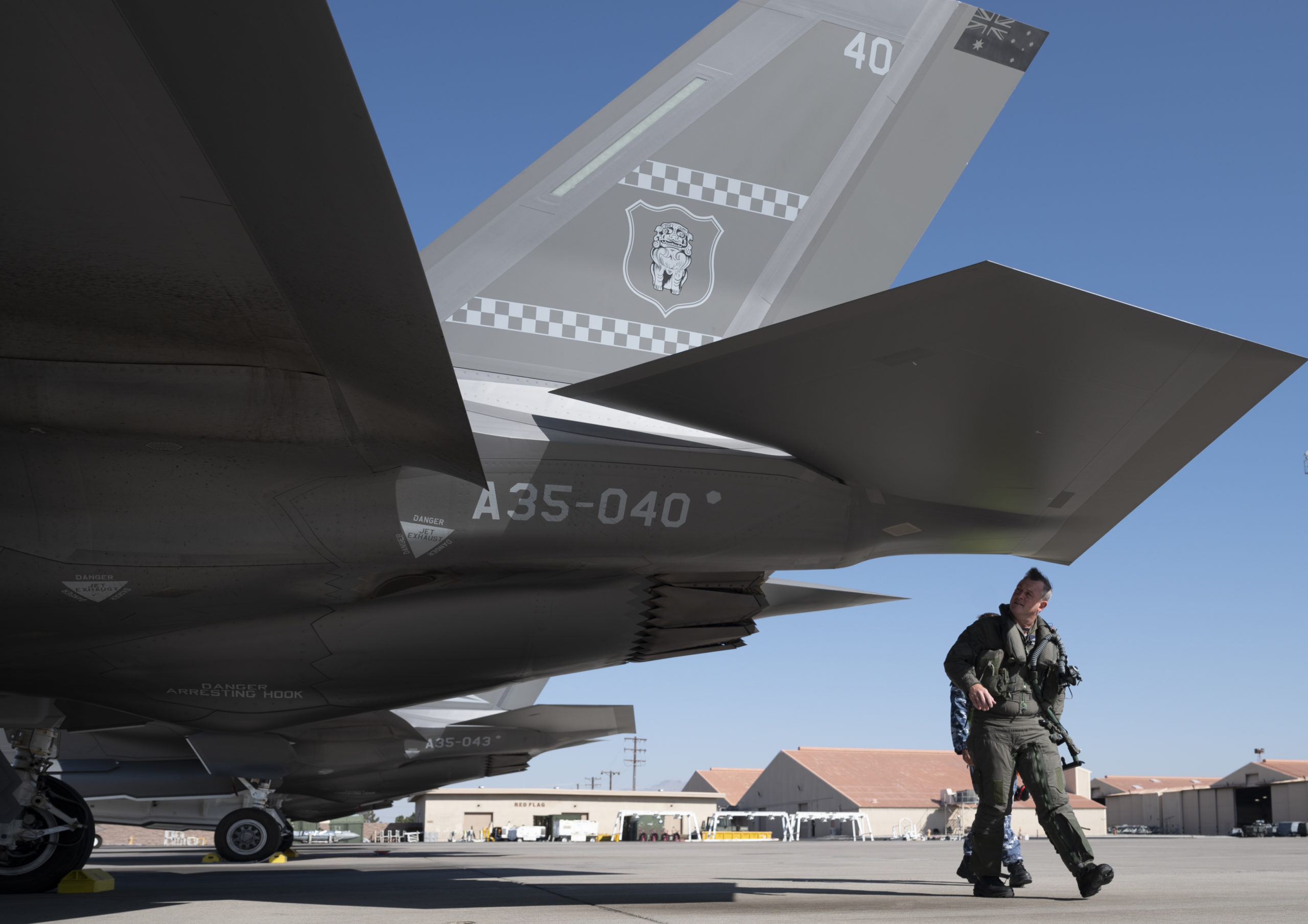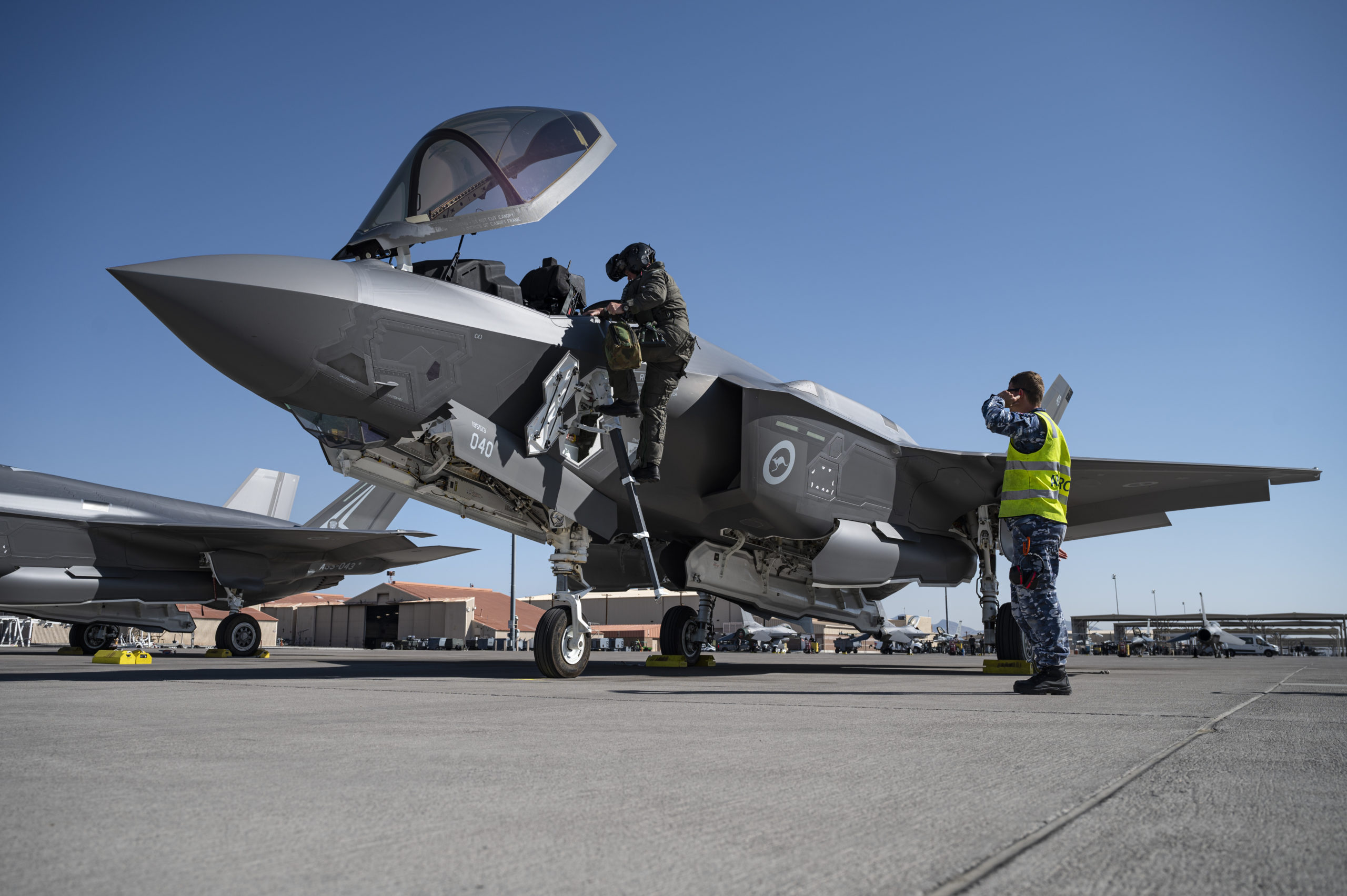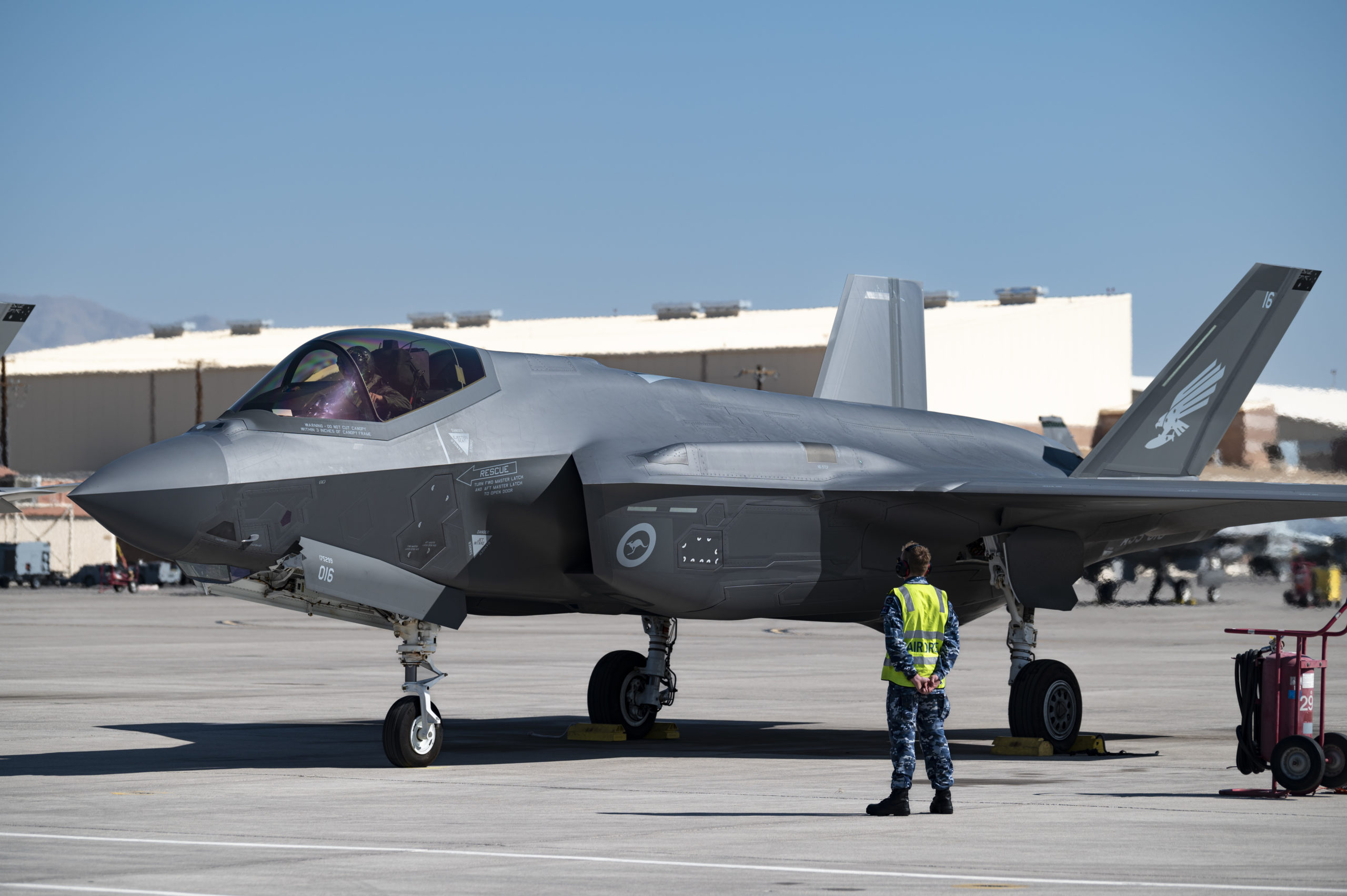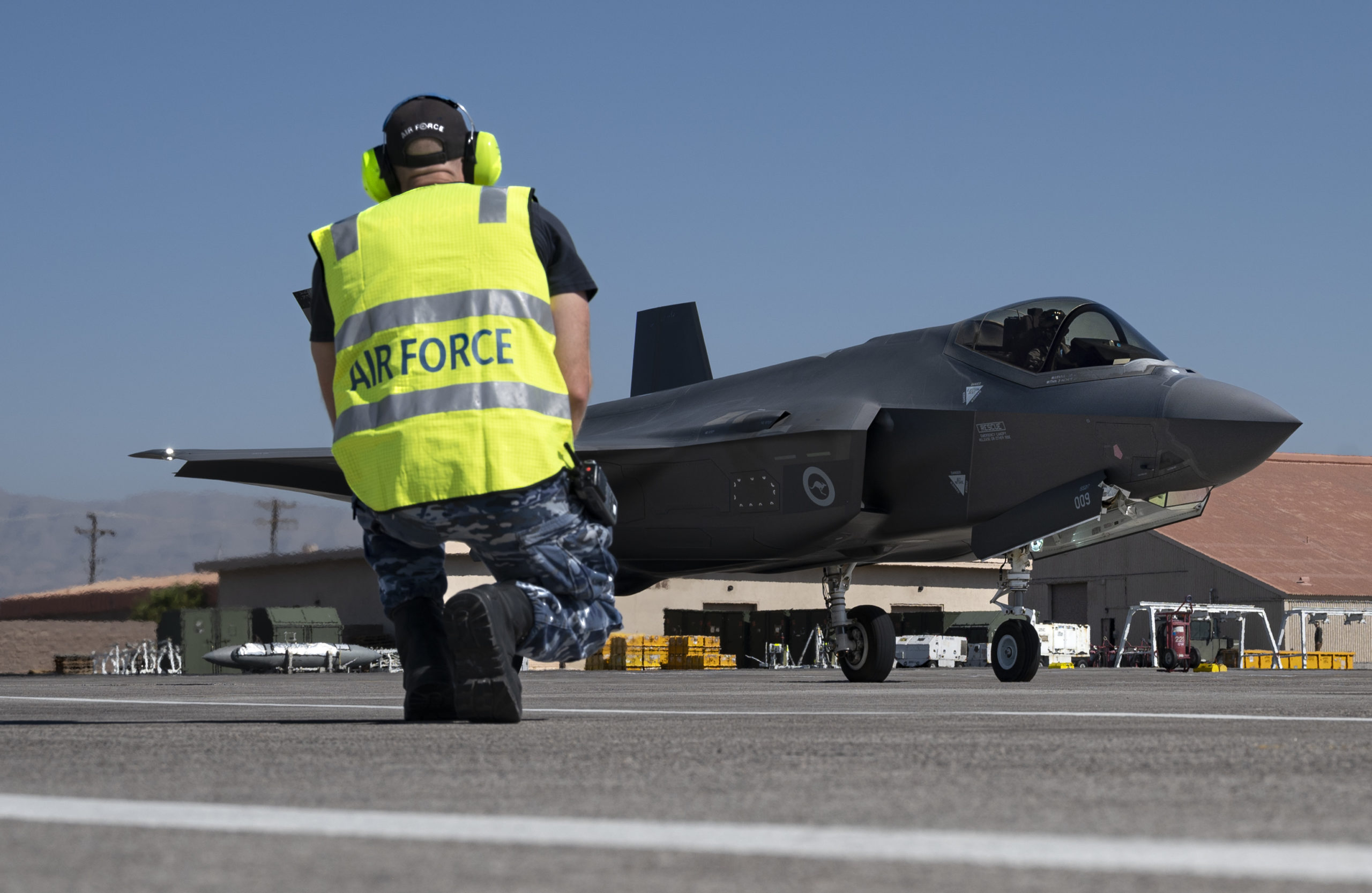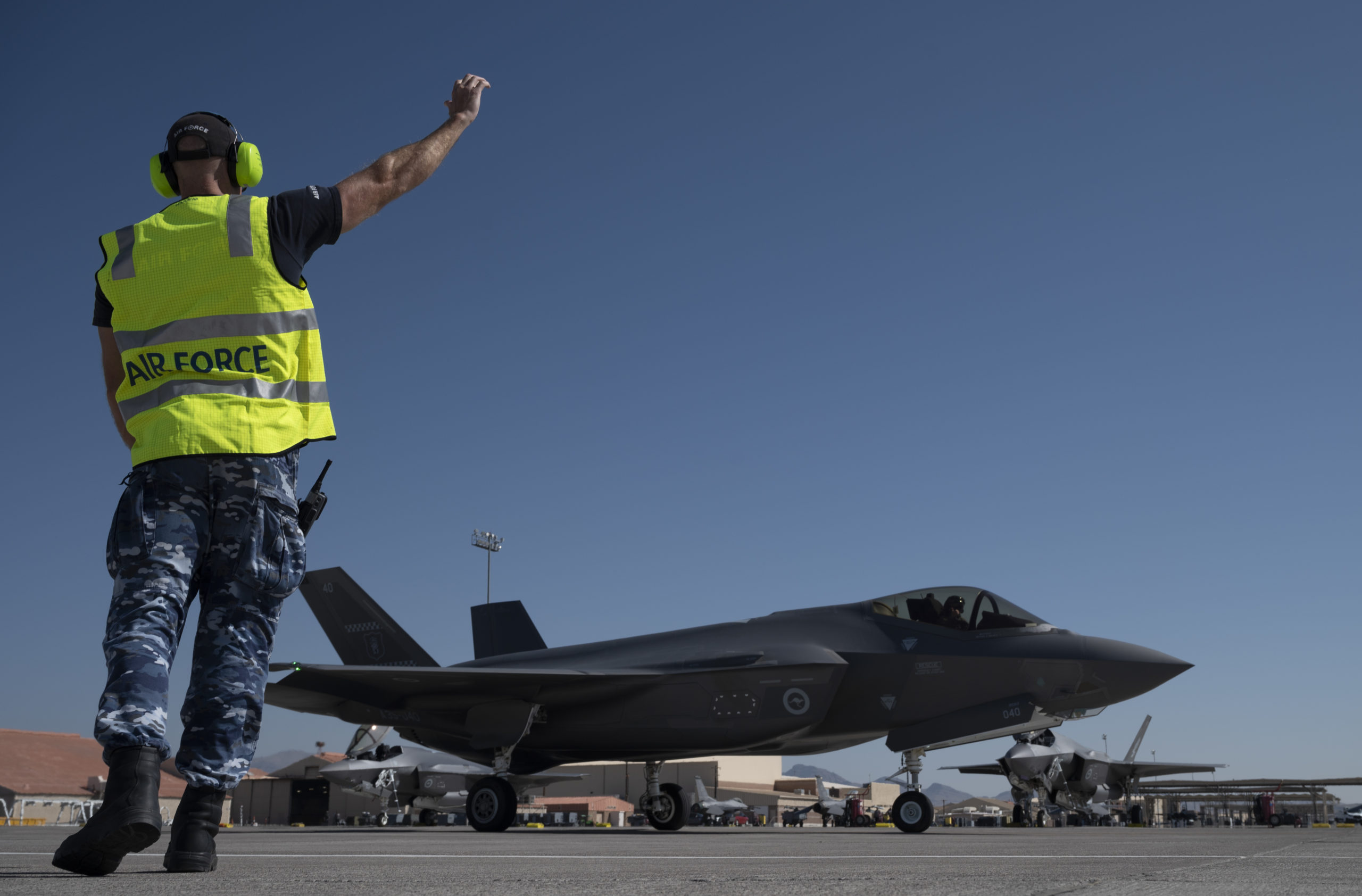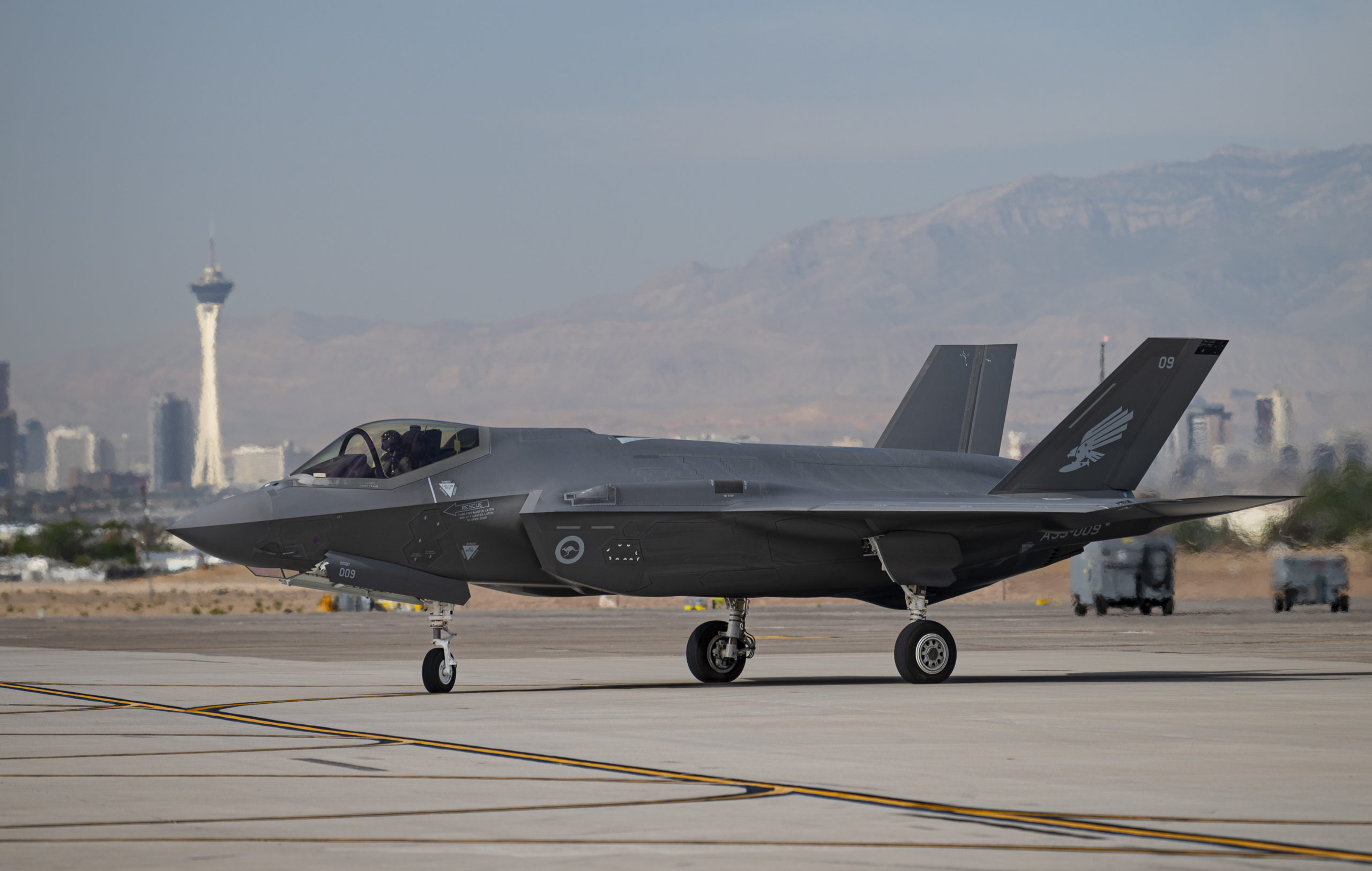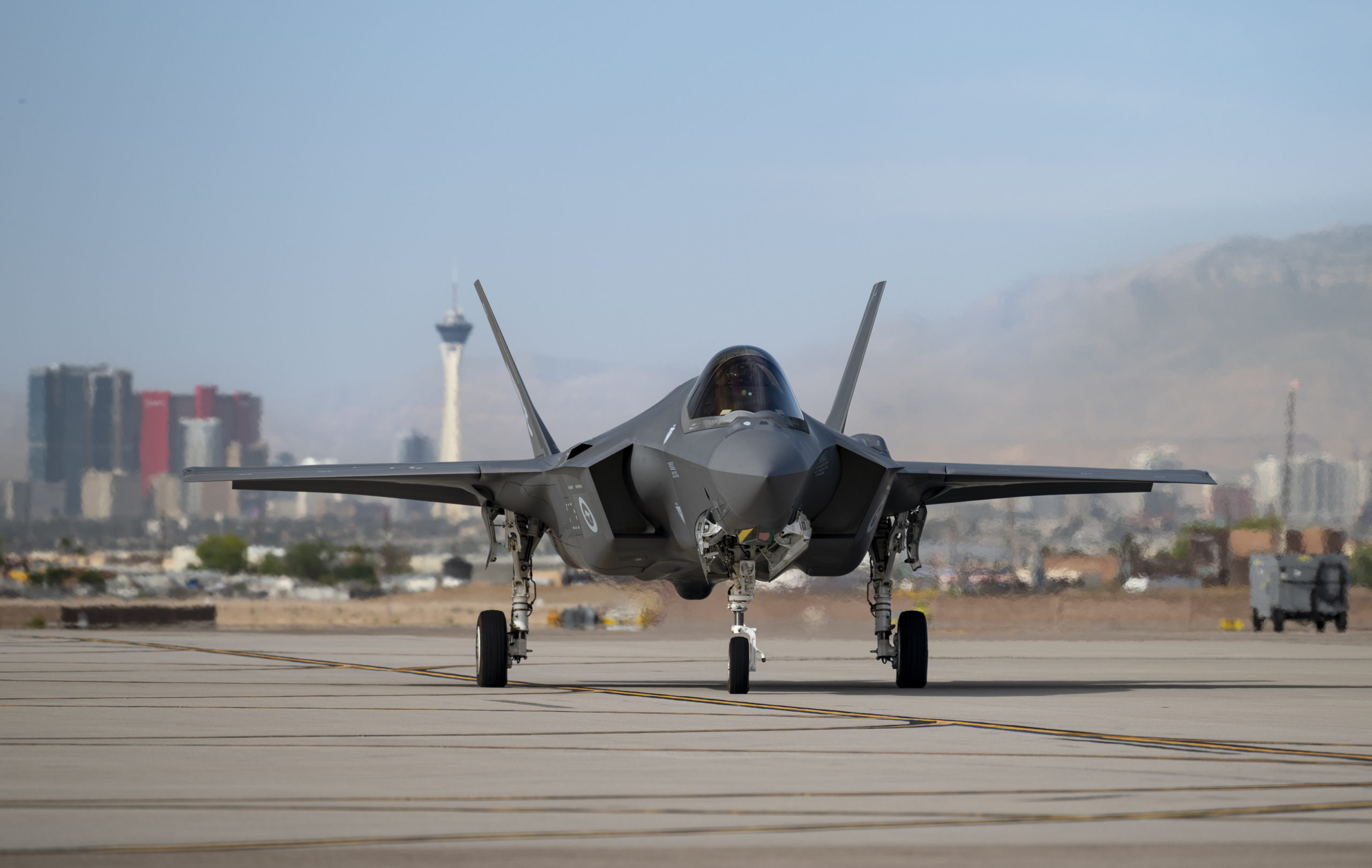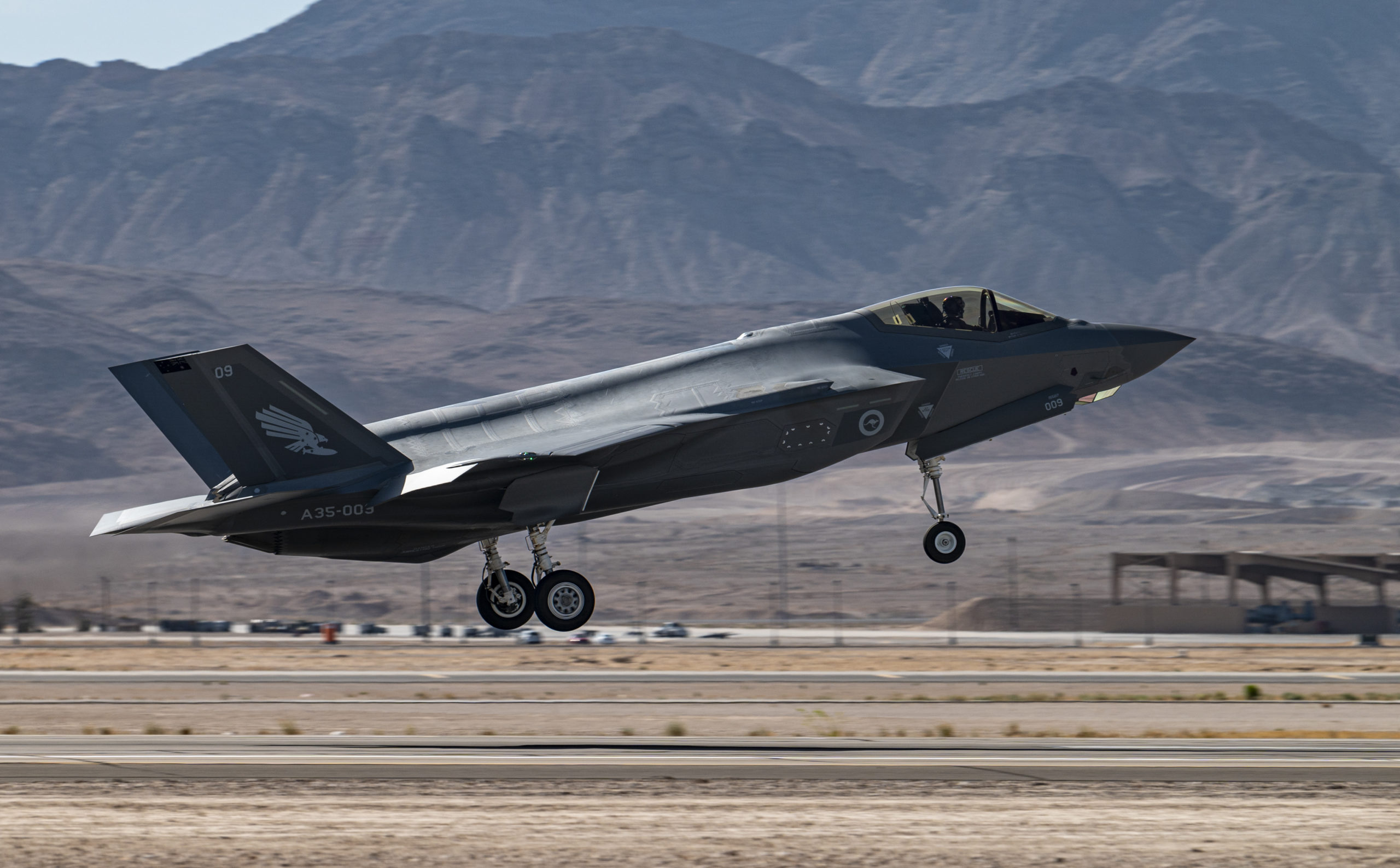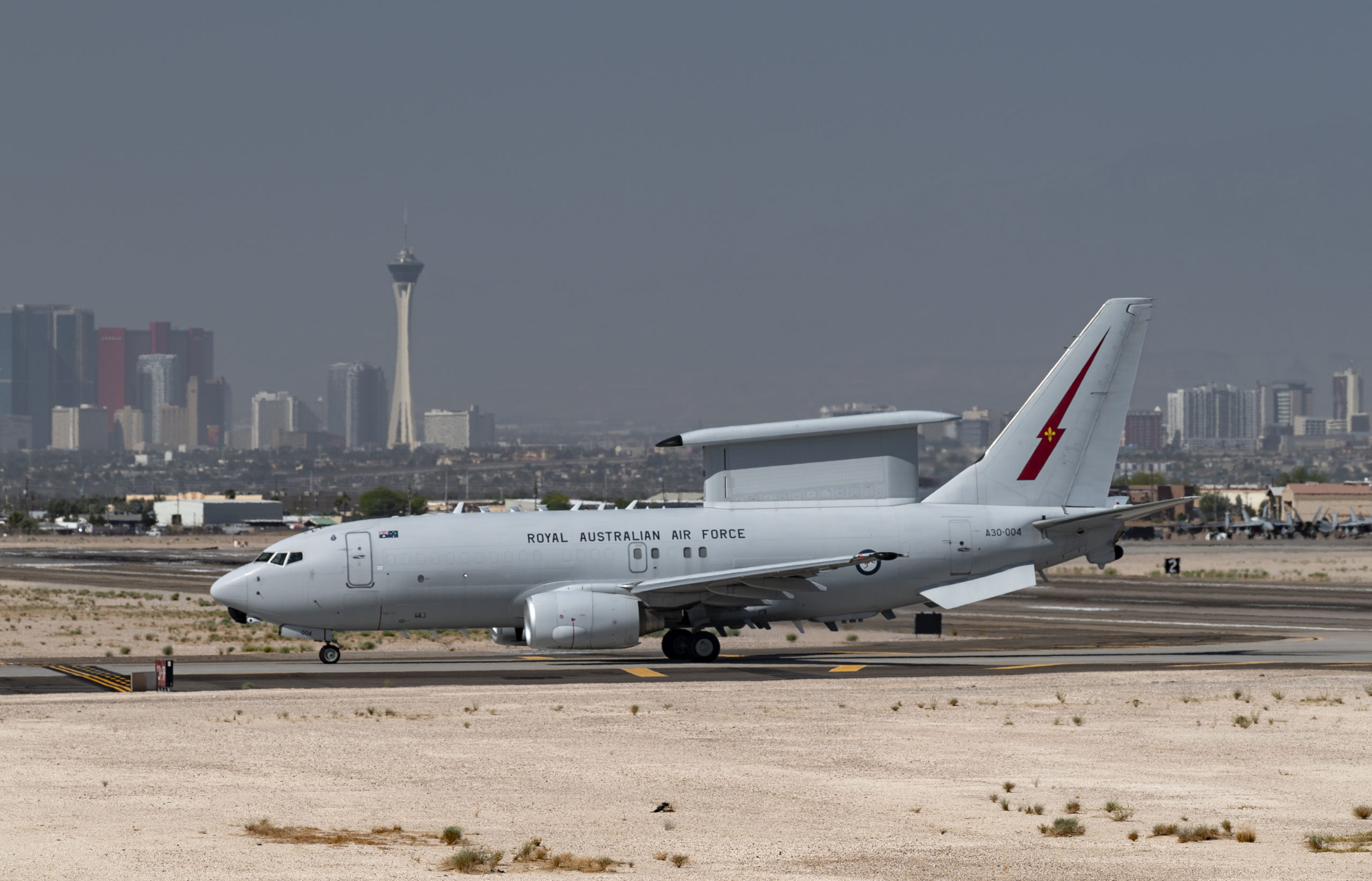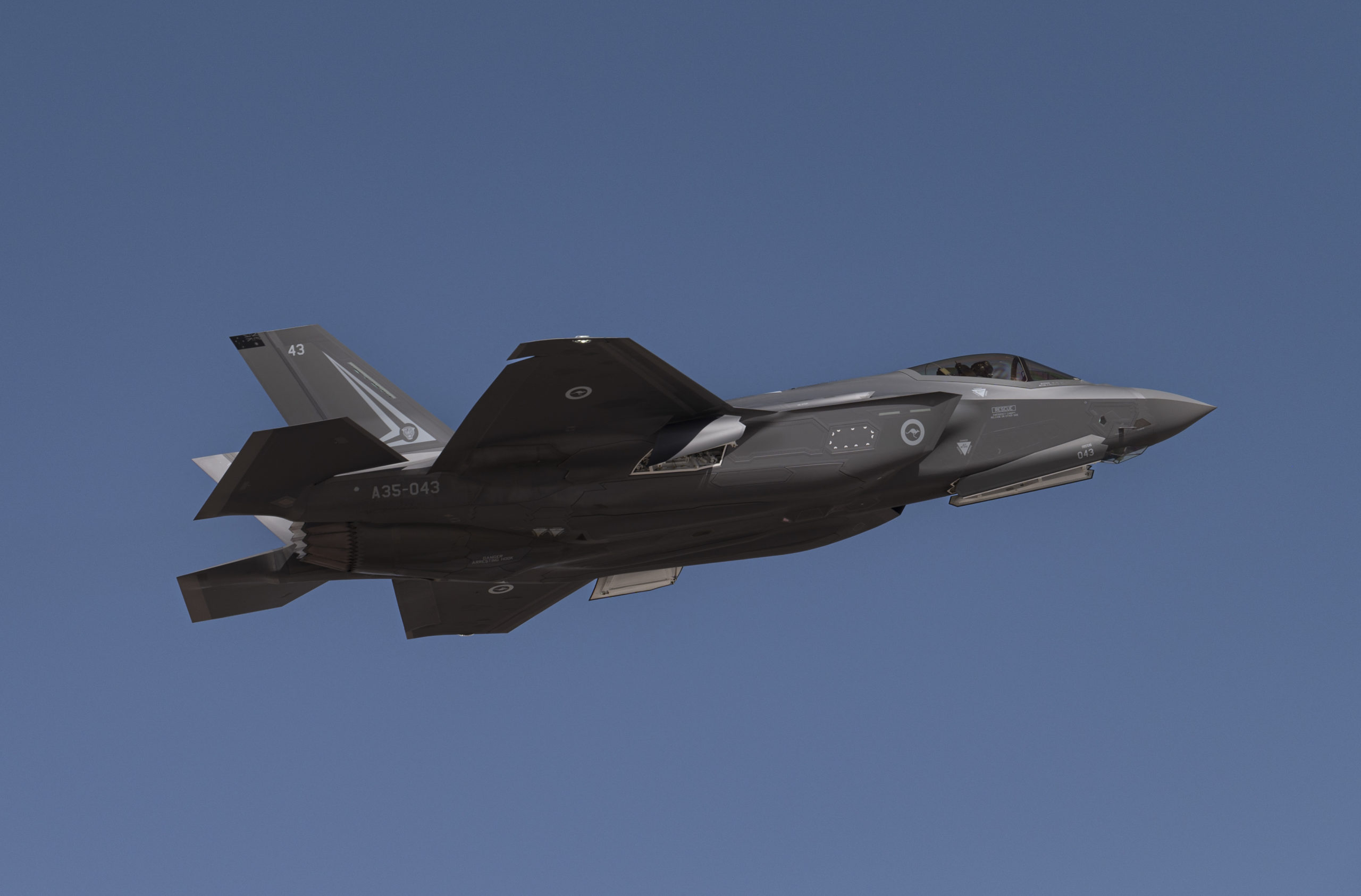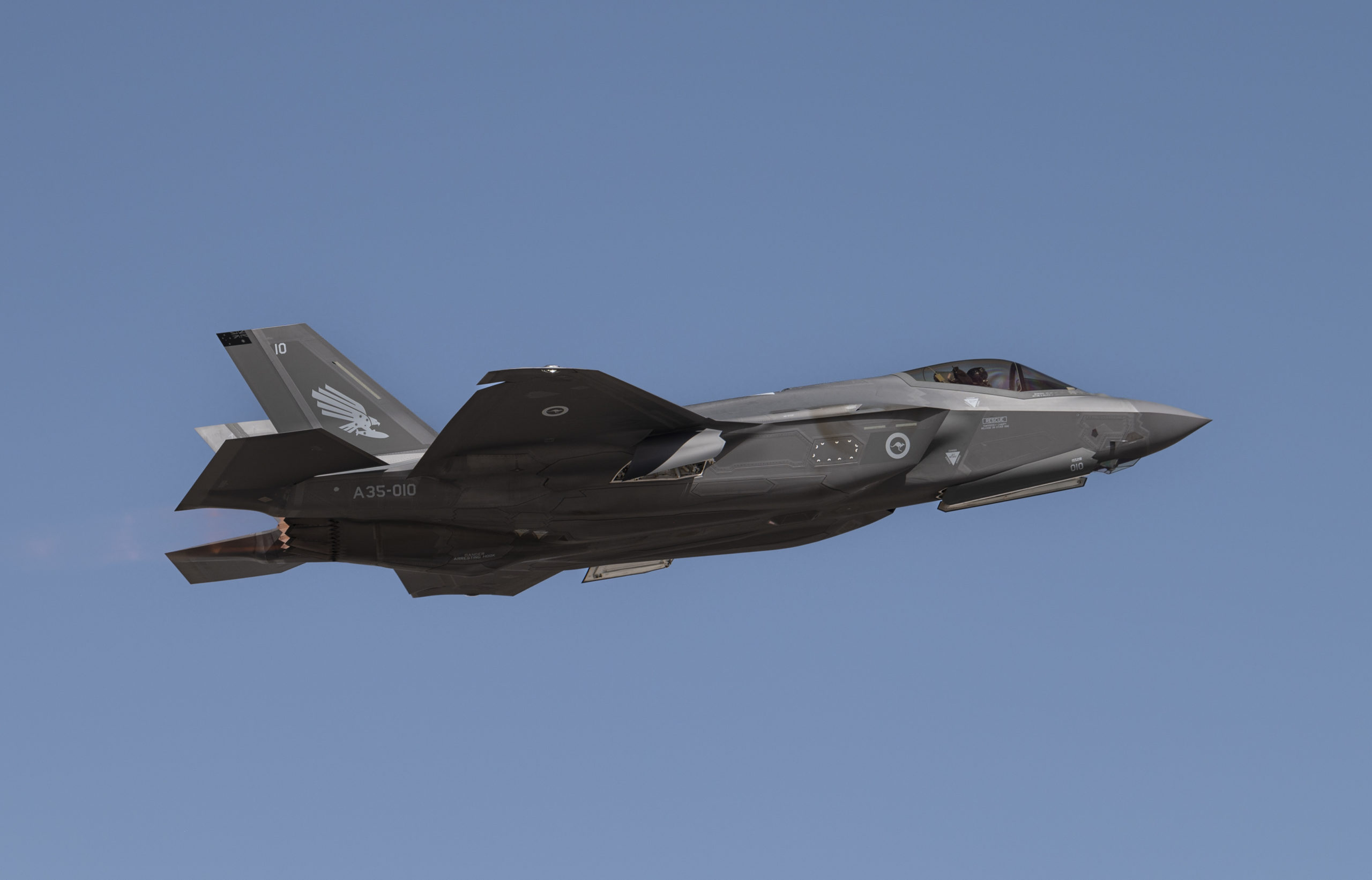By Robbin Laird
When I worked for Secretary Wynne when he was head of defense acquisition and then Secretary of the USAF, I had a chance to focus on the coming of the F-35 global enterprise. What I argued at the time was that a global force of F-35s would provide a foundation for working defense integration, not just interoperability.
For me, the aircraft was not really a fighter understood in classic terms; it was a multi-domain flying combat system.
And was designed from the ground up to fight as a wolfpack with the goal of having that wolfpack include all F-35 users and operators in a particular region.
Clearly, with the UK and the Australians, this is occuring.
With regard to the UK, we have seen this demonstrated in terms of how HMS Queen Elizabeth has worked with Marines and the USS America, to use on example.
For the Australians, working recent Red Flags and Black Flags have underscored how ways forward for force integration are being shaped.
For example, in a USAF article published on May 23, 2022, Aussie and U.S. efforts at Black Flag highlighted a way ahead.
The 53rd Wing conducted Black Flag 22-1, bringing together four branches of the U.S. military and the Royal Australian Air Force in a first coalition test environment to identify enhancements to night-one capabilities, May 9-13.
As part of the Air Force’s test flag enterprise, Black Flag allows the Air Force to test like we fight, developing force integration techniques and discovering capabilities utilizing existing and emerging material to deliver combat capability to the warfighter.
As one of the participants in Black Flag, the RAAF brought the E-7A Wedgetail allowing the Air Force an opportunity to look at the operational integration capabilities the E-7 has to offer. While this isn’t the first time the RAAF has integrated the E-7 with the USAF, it’s their first time taking part in a test exercise. The Air Force’s first E-7 prototype is projected to be delivered to the fleet in FY27.
Following Black Flag, the RAAF’s E-7 flew to Tyndall Air Force Base where it took part in the 53rd Wing’s Weapons System Evaluation Program-East, a premier joint event that evaluates a squadron’s ability to conduct air-to-air live fire missions.
“This integration is more than just test, we are developing the backbone that will drive our tactics and communication capabilities in a wartime scenario,” said Maj. Theodore Ellis, Black Flag director. “So, if we get to night one, we don’t have to educate everyone, the knowledge will already be out there and we can focus on the fight.”
A large objective of this Black Flag iteration was addressing automated long-range kill-chains and how to ensure the technologies that support them are operationally ready and relevant.
In January, at the 2021 Weapons and Tactics Conference, Maj. Ridge Flick and his team presented WATCHBOX and Tactical Radio Application eXtension, or Trax, two powerful data translation and routing tools that significantly speed up the data transfer from sensor to shooter.
“A single intelligence hit in a database during our weapons school integration phase normally could take 25 to 30 minutes before it is passed to a shooter on Link 16,” said Flick, Air University Fellow assigned to the USAF Warfare Center. “Now we’ve shortened the timeline through automated means to anywhere from 40 seconds to four minutes, and removed the errors associated with humans transposing information from one system to another.”
Incorporated in Black Flag 22-1, Flick and his team tested automated intelligence reporting using Watchbox and automatically disseminated the reporting to six separate ground nodes and two Link-16 networks using TRAX. The testing proved combining machine-to-machine communication and automated intelligence reporting enables significantly shorter kill-chains.
“The Advanced Battle Management System will solve some very crucial infrastructure problems, but that’s projected for the future, and we need something that works now,” Flick said. “Watchbox and other intelligence reporting programs, like SNAPGLASS, paired with TRAX are the interim solution.”
Building off Secretary Kendall’s seven operational imperatives, the 422nd Test and Evaluation Squadron Command and Control, or C2, division created and employed a never-before-seen mobile C2 element during Black Flag that aggressively responded to four of those imperatives.
Often referred to as “movable not mobile,” tactical C2 capabilities have historically been stationary in nature due to the hours it takes to transport the aging cumbersome technology that has been employed for the past 20 years, according to Maj. Paden Allen, 422nd TES C2 division commander.
n an effort to modernize, Allen and his team equipped an SUV with commercial and government “off-the-shelf” technology to assemble a tactical C2 element that was able to provide command and control functions while on the move. Some examples of their gear include a Kymeta antenna, assorted radios, ruggedized computers with servers, and Move Out/Jump Off, or MOJO, that provided additional tactical data link capability.
“It’s inconspicuous and if we needed to abandon the vehicle in a scenario, we could do so in less than 20 minutes with all our gear,” Allen said. “Through this innovative capability, we proved that we can set up shop anywhere with no setup time.”
Allen’s team executed two missions which provided tactical C2 capabilities that demonstrated the flexible and rapid mobility options to and from the Nevada Test and Training Range.
This included driving the SUVs more than two hours to demonstrate command over land as well as airlift using a U.S. Marine Corps’ KC-130 Hercules to a dry lakebed on the NTTR to replicate deployment and extraction from austere environments.
Through successful testing, the team discovered they could scale this solution to multiple types of vehicles, potentially increase the number of classifications of data they could work between and add additional data links by integrating emerging technology. These solutions would allow more integration among other forces.
“We don’t have time to wait for the newest weapons system, but we can develop a new tactic tomorrow,” said Col. Matthew Bradley, 53rd Wing commander. “Those integrated tactics that come out of Black Flag are how we’ll combat the pacing challenge. It all comes down to who has the tactical advantage.”
The 53rd Wing’s next test flag event will be a first-ever maritime Black Flag. The Air Force will partner with Marine Air Group 11 to focus on long-range takedown of mobile maritime threats. The maritime Black Flag will take place in June 2022.
And the Aussie perspective was provided by Australian Business Defence Review in a May 23, 2022 article.
The Royal Australian Air Force has deployed a Boeing E-7A Wedgetail AEW&C aircraft and Lockheed Martin F-35A fighters to the new Exercise Black Flag in the US.
Held across multiple locations in the US from 9-13 May, Black Flag 22-1 is part of a new series of exercises which seeks to test and evaluate new technologies and equipment in large-scale operationally-relevant scenarios. Black Flag is the recent designation for large scale test events (LSTE) conducted by the US Air Force’s Eglin AFB, Florida-based 53rd Wing.
“As a venue for innovation through integration, Black Flag is ultimately a deep-end testing arena to create and discover capabilities utilizing existing and emerging materiel,” 53rd Wing Director of Staff and lead project officer for Black Flag, LtCol Mike Benitez described the event in a December 2020 release. “Black Flag’s largest benefit is that it’s a tactical initiative with strategic impact. Warfighters know that innovation happens at the intersection of weapons and tactics – where integration occurs.”
The addition of the RAAF was the first time a foreign service had participated in Black Flag. The USAF recently announced it would acquire the E-7 to replace some of its ageing E-3G AWACS fleet, so the participation of the RAAF’s E-7A gave participating units from the USAF and US Marine Corps an opportunity to see how the system will integrate operationally with other capabilities. It has been reported that six RAAF F-35A Lightning IIs also participated in the event, operating out of Nellis AFB near Las Vegas.
tactics and communication capabilities in a wartime scenario,” Black Flag director, Maj Theodore Ellis said in a 20 May release. “So, if we get to night one, we don’t have to educate everyone, the knowledge will already be out there, and we can focus on the fight.
“I hope (the E-7 is) the answer to everything!” Maj Ellis told The Warzone. “But that’s what we are testing out,” he said, adding that the Wedgetail had been pushed “far away [to] test this thing out to the extreme limits of its capabilities.”
Following Black Flag, the E-7A flew to Tyndall AFB in Florida where it took part in the 53rd Wing’s Weapons System Evaluation Program-East, described as a premier joint event that evaluates a squadron’s ability to conduct air-to-air live fire missions.
And in an article by Thomas Newdick published on May 20, 2022, further insight was gained with regard to the way ahead with regard to multi-domain integratability.
As for the latest Black Flag 22-1, which took place May 9-13, this was the first of these exercises to be run on a coalition basis. Although the United Kingdom had been invited take part, the timings didn’t work out this time round, although it’s significant that the planners were looking to leverage the new trilateral defense cooperation pact, known as Australia-United Kingdom-United States, or AUKUS, that came into being last year.
“Our ability to integrate is a requirement,” says Col. Matthew J. Bradley, the commander of the 53rd Wing. “I don’t think the United States will go to war alone. The Secretary of Defense wants to set us up as the partner of choice but with the focus on interoperability across many partner nations and making sure that we don’t have to figure out in combat what we’re not doing well together.”
The Air Force had previously worked with the U.S. Navy, Marine Corps, and Army on Black Flag, but adding a foreign partner presented some challenges. After all, the nature of the test work means that there are some highly sensitive and likely even classified assets and tactics involved. CINC admitted that the security process was “an intensive process, but worthwhile in the end.” The RAAF didn’t simply arrive at Nellis and start flying missions but was involved from early on in the planning phase as an integral part of the exercise.
RAAF participants comprised six F-35A stealth fighters that deployed from their base in Australia, as well as an E-7A Wedgetail airborne early warning and control (AEW&C) aircraft. The E-7 was participating for the first time since the Department of the Air Force decided to replace a portion of the E-3 Sentry Airborne Warning and Control System (AWACS) fleet with the jet, for which Australia was the launch customer.
And the extent of integration being worked was highlighted in this quote from a Defense News story published on May 23, 2022.
“This integration is more than just [a] test,” Black Flag director Maj. Theodore Ellis said in a May 20 statement. “We are developing the backbone that will drive our tactics and communication capabilities in a wartime scenario. So if we get to night one [of a battle], we don’t have to educate everyone, the knowledge will already be out there and we can focus on the fight.”
And prior to Black Flag, the RAAF came to Red Flag 22-1.
According to a Nellis Air Force Base story published on February 3, 2022, Australian and U.S. integration was worked during that exercise.
“The U.S.’s strong alliances are a major strategic strength that not only lends capability but also legitimacy to our international stance,” said Col. Jared Hutchinson, 414th Combat Training Squadron commander.
The Royal Australian Air Force is working closely with its allies to improve interoperability and learn how to better work with the variety of assets at Nellis Air Force Base.
“The number of assets that are provided here at the exercise provides a much more complex and dynamic scenario that we aren’t able to train for back home,” said FLTLT Brayden Whicker, an Air Battle Manager mission crew. “This basically allows us to come here and work with the best of the U.S. and U.K. in a much more complex environment.”
Although Red Flag is aimed at creating realistic training and increasing combat effectiveness for pilots, the values of this integration exercise extend to the maintainers as well. The joint environment equips military members with a new, mutual understanding of operations.
“The benefit of an exercise like Red Flag for the ground crew is to integrate with our coalition forces and understand how they operate for the joint force,” said CPL Corey Seydler, an avionics technician. “It’s providing an amazing product for our air crew because the training benefit they get from an exercise like Red Flag is astronomical and us being able to provide support for that is pretty impressive.”
Red Flag also allows each force to communicate and plan together, which is key in understanding the operation and integration of everyone involved. According to the National Defense Strategy, America’s force posture, alliance and partnership architecture, and Department modernization provide the capabilities and agility required to prevail in conflict and preserve peace through strength.
“Being able to sit down and chat with different assets, learn of what they can do, how we can integrate better and learn from our mistakes from previous trips definitely provides a better product at the end of the exercise,” said Whicker.
The integration of the RAAF E-7A is an opportunity to integrate friendly forces but also a chance to learn more of how the E-7A complements the E-3 Sentry, the U.S. Air Force’s primary airborne command and control platform.
“The E-7A Wedgetail is very similar to the United States E-3 Sentry,” said Seydler.
Compared to the E-3’s rotating radar dome, the E-7’s technology uses a Multi-role Electronically Scanned Array (MESA) radar for detection and awareness of friendly, neutral and hostile activity.
“It has no moving parts; it’s all electronically steered,” said Whicker. “Because we’re not waiting for a complete scan cycle of a full rotation, we’re able to electronically steer the beam, which means we’re able to provide faster refresh rates for radar detections on a target.”
All in all, the Wedgetail and its crew produce yet another aspect that makes Red Flag such a diverse and effective combat training exercise.
“Being able to come over here and integrate our platform into such a large warfighting exercise really can help us practice our battle rhythm in case we end up in a larger conflict around the world,” said Seydler. “Being able to integrate our warfighting abilities with our allies is a key ingredient for contributing to the joint force.”
And recently, B-2 bombers have come to Australia to train with the RAAF, notably to work integration with the RAAF’s F-35 force.
According to an Australian Aviation story published on August 18, 2022, the B-2s came in force to work with the RAAF.
The visit of the batwing B-2s to Base Amberley likely amounts to the biggest ever deployment of the US’s most important military jet to Australia, with the country’s active fleet only numbering 20.
In total, six B-2s have visited Base Amberley this year, with one aircraft touching down in March before the current deployment began in July.
The fleet is visiting as part of an initiative to improve interoperability between the US Air Force and the RAAF’s F-35s. They have been joined by “several” KC-135 Stratotanker refuelling aircraft.
“This deployment of the B-2 to Australia demonstrates and enhances the readiness and lethality of our long-range penetrating strike force,” Lt. Col. Andrew Kousgaard, commander of the 393rd Expeditionary Bomb Squadron, said earlier.
“We look forward to training and enhancing our interoperability with our RAAF teammates, as well as partners and allies across the Indo-Pacific as we meet PACAF objectives.”
The PACAF Commander and Reworking Pacific Defense: “The AOR Will Become a CAOC”
Thinking Through the Future of Airpower: Air Marshal Brown Weighs In
For a detailed look at the ADF trajectory for defense transformation, see the following:


